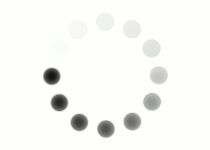 While we study color using the color wheel, there are lots of other ways to arrange color spaces. Organizing color theory wheels with red, yellow, and blue as the primary colors helps describe the emotional, psychological, and visual relationships between colors. But for technical needs like displaying colors on a monitor or making color prints, we need to understand how different color modes work.
While we study color using the color wheel, there are lots of other ways to arrange color spaces. Organizing color theory wheels with red, yellow, and blue as the primary colors helps describe the emotional, psychological, and visual relationships between colors. But for technical needs like displaying colors on a monitor or making color prints, we need to understand how different color modes work.
When you see colors displayed on a monitor (like the one you're using now), the colors are generated using light. This system's primary colors are red, green, and blue and is called RBG. This system uses additive color to mix different colors of light in order to create a wide spectrum of colors. By mixing different amounts of the colors red, green, and blue, digital devices generate the full spectrum of colors you see.

|
|||
| Combined | Red Light | Green Light | Blue Light |
The term additive color comes from the fact that projected colors are added together rather than absorbed by paint or ink. When designing for electronic displays, film, or photography you will use additive colors, since these formats rely on the projection of light to create images. Designers and technicians will use the term RGB (red, green, and blue) to refer to additive colors.
The image on the right demonstrates how mixing the different amounts of light will result in new colors. Notice how cyan, yellow, and magenta are created in the areas where two colors overlap, and how all three colors together make pure white.
Question
In the color model above, there is no black. How can you make pure black using the RGB color model?
